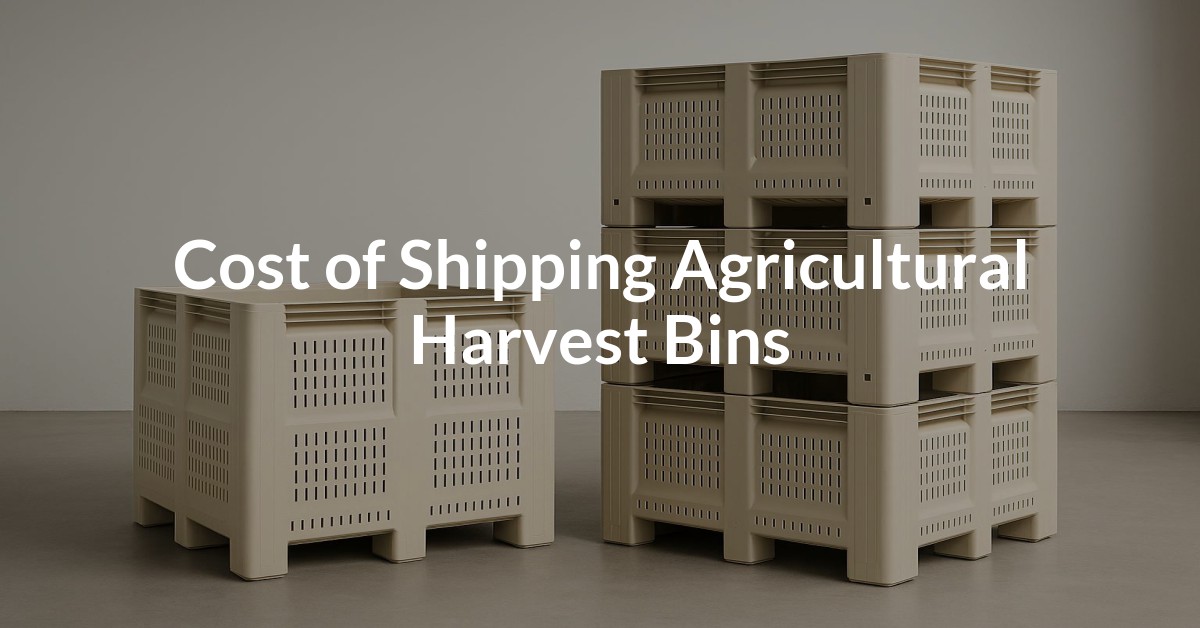In the fast-paced world of agriculture, ensuring that harvest bins reach their destination safely and efficiently is paramount. These bins play a crucial role in transporting produce from the fields to processing facilities or markets, and improper handling can lead to product loss and financial setbacks. This guide equips you with knowledge on best practices for packaging and crating agricultural harvest bins.
Understanding Agricultural Harvest Bins
Agricultural harvest bins are designed to transport a variety of produce including fruits, vegetables, and grains. These bins must withstand the stresses of transport while maintaining the quality and integrity of their contents. Factors like size, weight, and material of the bins can vary, influencing the choice of freight service and packaging methods.
Choosing the Right Freight Service
FreightSideKick.com offers a myriad of freight services catering to different shipping needs. Whether transporting full truckloads (FTL) or less than truckloads (LTL), selecting the right service based on the shipment size and type is essential for cost-efficiency and safety.
Full Truckload (FTL) Options
For larger shipments of agricultural bins, FTL services are suitable. Options include Dry Van for standard shipments, Refrigerated trailers for perishables, and Flatbed for oversized bins. If your harvest bins are heavy or over-dimensional, a Step Deck or Drop Deck may be needed.
Less Than Truckload (LTL) Solutions
For smaller loads, LTL is cost-effective and ideal. It accommodates palletized bins, crates, and bags, providing flexibility for shipments up to 15,000 lbs. Shared or Partial Truckload services can also be used for shipments between 12-36 feet, up to 30,000 lbs.
Packaging and Crating: Best Practices
- Use durable materials for packaging to prevent exposure to elements.
- Ensure harvest bins are securely stacked and sealed to prevent shifting.
- Use padding materials to cushion contents and reduce impact during transport.
Adhering to these practices ensures that agricultural harvest bins are well-protected throughout their journey, minimizing the risk of damage.
Loading and Unloading Procedures
Efficient loading and unloading are critical to maintaining the condition of harvest bins. Use forklifts for heavy bins, adhere to safety protocols, and supervise the process to ensure secure handling without causing damage to the products.
The Importance of the Bill of Lading
The Bill of Lading (BOL) is a vital legal document in the shipping process, acting as a receipt of goods and a contract of carriage. It details the shipment contents, destination, and handling instructions. You can create a valid document using our Bill of Lading Generator to ensure compliance and legal protection.
Common Shipping Mistakes to Avoid
Pitfalls such as inadequate packaging, incorrect freight service selection, and failure to comply with transportation regulations can lead to shipment delays and added costs. Be proactive by planning ahead and consulting with shipping professionals when needed.
Cost Factors and Strategies
Understanding cost factors such as weight, distance of travel, and special handling needs helps in budgeting effectively. Opt for efficient routes and leverage shared truckloads when possible to save costs without compromising service quality.
Personalized Assistance
Get a quote today, call 877-345-3838, or email support@freightsidekick.com











